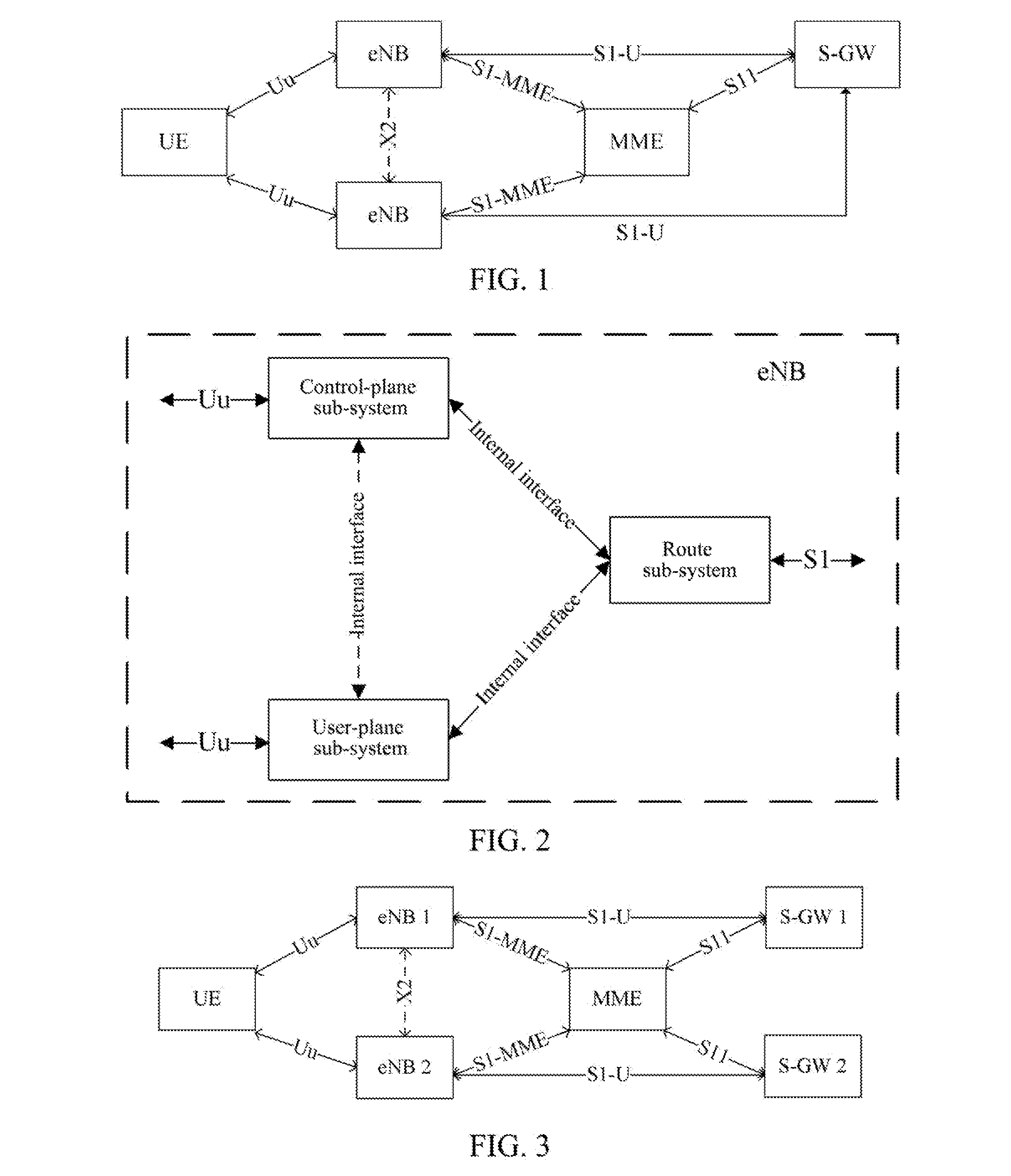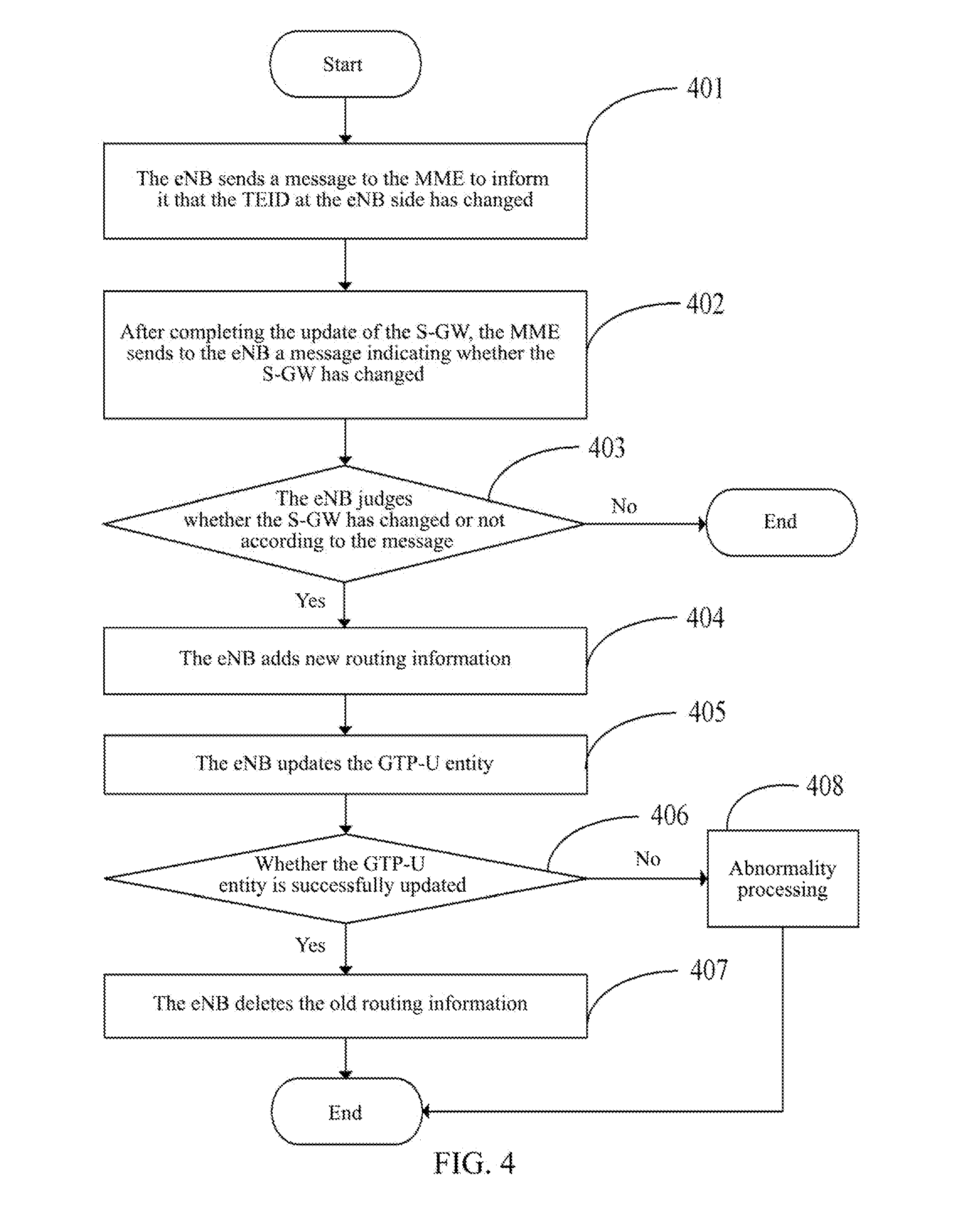Method, System and Evolved NodeB Apparatus for Implementing Inter-Evolved NodeB Handover
a nodeb and evolution technology, applied in electrical equipment, wireless commuication services, connection management, etc., can solve problems such as data loss, data loss, data loss, etc., and achieve the effect of enhancing user experien
- Summary
- Abstract
- Description
- Claims
- Application Information
AI Technical Summary
Benefits of technology
Problems solved by technology
Method used
Image
Examples
application example 1
[0087]The application example of the method for implementing inter-eNB switch as follows is completed through interaction between the target-side eNB and MME and between sub-systems within the eNB. Without loss of generality, after the UE switches to the eNB via an X2 interface, the manner of updating the GTP-U by the user-plane sub-system of the eNB is to firstly establish a new GTP-U entity and then delete the old GTP-U entity. It is assumed that the UE has an E-RAB, and the corresponding E-RABID is 3. In the TEID pair of the GTP-U distributed by the target eNB, the TEID at the eNB side is 34, and the TEID at the MME side is 55. It is assumed that the internal interface between the control-plane sub-system and the route sub-system is a function interface, and the internal interface between the control-plane sub-system and the user-plane sub-system is a message interface.
[0088]501: After completing the X2 switch at the radio side, the eNB sends a PATH SWITCH REQUEST message to the ...
application example 2
[0103]The application example of the method for implementing inter-eNB switch as follows is completed through interaction between the target-side eNB and MME and between sub-systems within the eNB. Without loss of generality, after the UE switches to the eNB via an X2 interface, the manner of updating the GTP-U by the user-plane sub-system of the eNB is to directly perform update using the old GTP-U entity (i.e., directly modifying related parameters on the old entity). It is assumed that the UE has two E-RABs (i.e., two services are implemented simultaneously), and the corresponding E-RABIDs are 3 and 4. In the TEID pair of the GTP-U distributed by the target eNB, the TEID at the eNB side corresponding to the E-RABID of 3 is 34, and the TEID at the MME side is 55. The TEID at the eNB side corresponding to the E-RABID of 4 is 44, and the TEID at the MME side is 66; it is assumed that the internal interface between the control-plane sub-system and the route sub-system is a function i...
PUM
 Login to View More
Login to View More Abstract
Description
Claims
Application Information
 Login to View More
Login to View More - R&D
- Intellectual Property
- Life Sciences
- Materials
- Tech Scout
- Unparalleled Data Quality
- Higher Quality Content
- 60% Fewer Hallucinations
Browse by: Latest US Patents, China's latest patents, Technical Efficacy Thesaurus, Application Domain, Technology Topic, Popular Technical Reports.
© 2025 PatSnap. All rights reserved.Legal|Privacy policy|Modern Slavery Act Transparency Statement|Sitemap|About US| Contact US: help@patsnap.com



